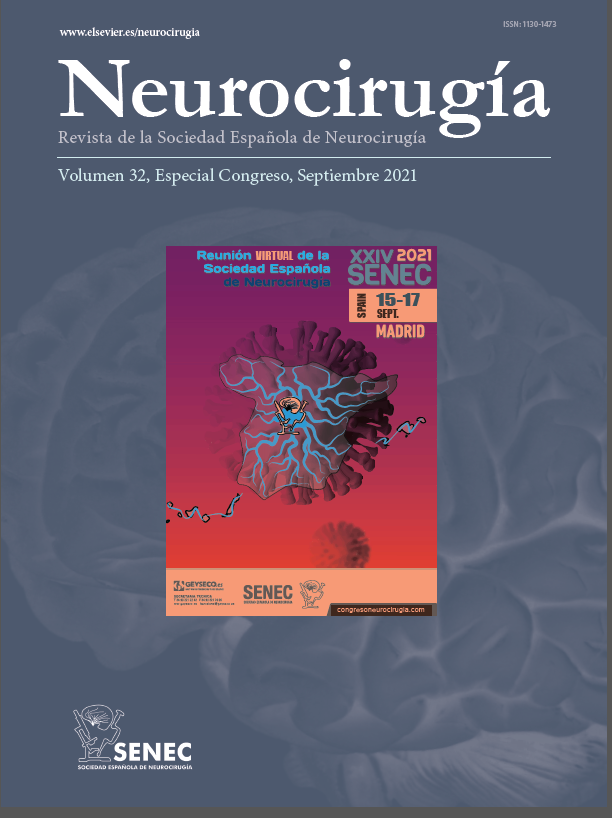C-0114 - WHEN A BENIGN TUMOR BECOMES A NIGHTMARE: RECURRENT EPIDURAL LUMBOSACRAL MENINGIOMA
Neurocirugía, Hospital Universitario Marqués de Valdecilla. Santander, Spain.
Objectives: We present the unusual case of a lumbar nerve root meningioma. We show how despite these tumors are classically considered as benign lesions, they do not need to grow inside the skull to become a real challenge for multidisciplinary oncological teams.
Methods: A 56-year-old female patient came to our department complaining of continuous radicular pain with right L5 distribution. Lumbar MRI revealed an epidural foraminal L4-L5 dumbbell-shaped lesion with bony erosion.
Results: Laminectomy, decompression, macroscopic tumor resection and L5-S1 posterior fixation were performed. Histological report was a WHO grade II atypical meningioma. After initial clinical improvement and adjuvant radiotherapeutic treatment, our patient developed a progressive weakness on her right lower limb. A new MRI revealed tumor recurrence affecting vertebral body, L4, L5 and S1 roots. A two-stage procedure consisting of vertebrectomy supplemented with a lumbopelvic fixation was performed. Pathologists came to the same outcomes. All surgeries were assisted with intraoperative CT –scan navigation guidance optimizing tumor resection. Followed by a period of significant improvement, progressive paraparesis and cauda equina syndrome called for a new MRI that demonstrated an intrapelvic mass recurrence which required a multidisciplinary laparotomy. Just two months after tumor debulking, a surprising extremely aggressive tumor growth contraindicated the planned radiotherapeutic adjuvancy. The final diagnosis remained a WHO grade II atypical meningioma. In spite of our best efforts, the patient finally underwent palliative care.
Conclusions: Traditionally, spinal meningiomas have been a pleasant intervention for neurosurgeons because of their benign nature and their relatively easy cleavage plane. Nevertheless, sometimes surgical efforts against this disease are just palliative and non-curative surgeries. Grade II tumors are difficult to treat and require close follow-up. To our knowledge this aggressive behavior has never been described in an atypical lumbar meningioma. Further tumor characteristics than only the grade should be considered to fully understand this disease.







